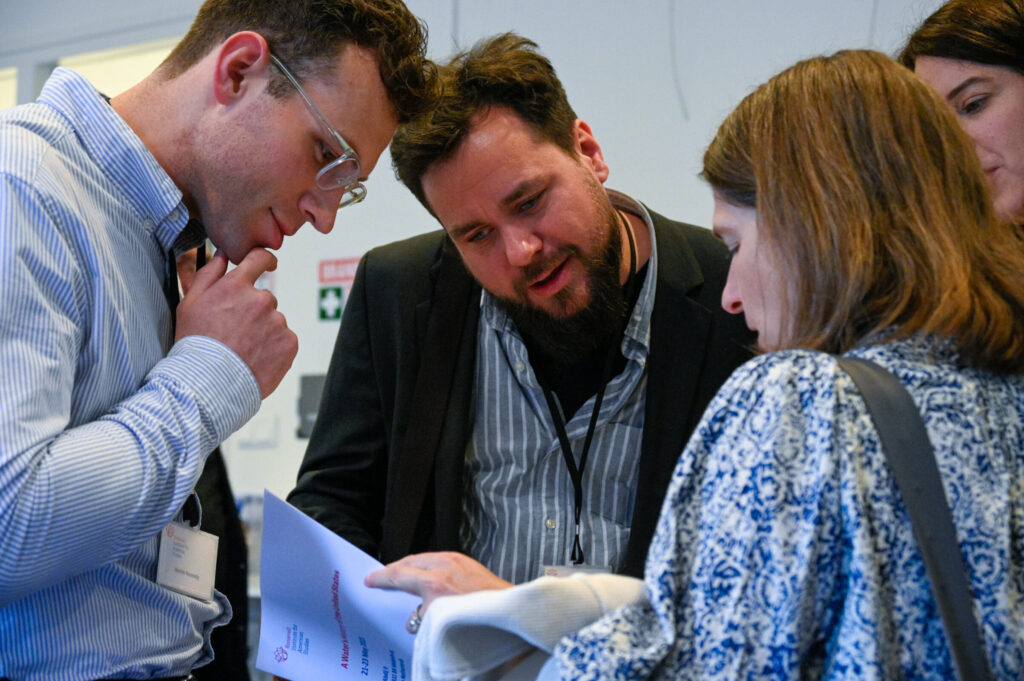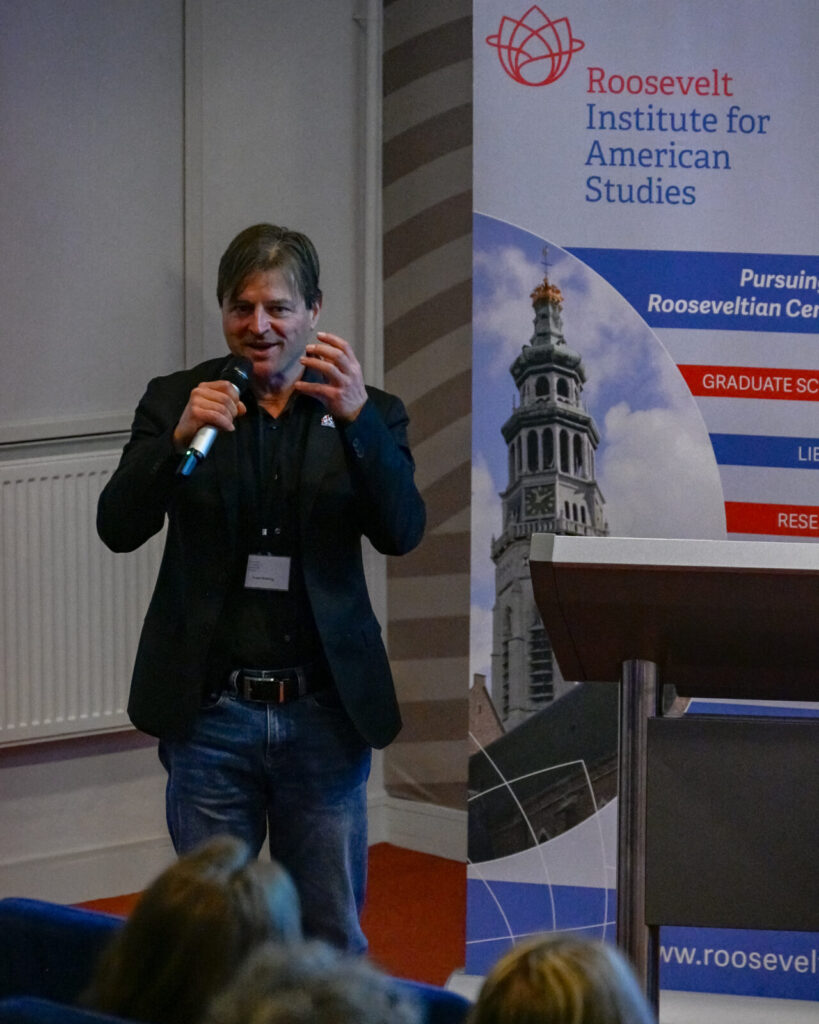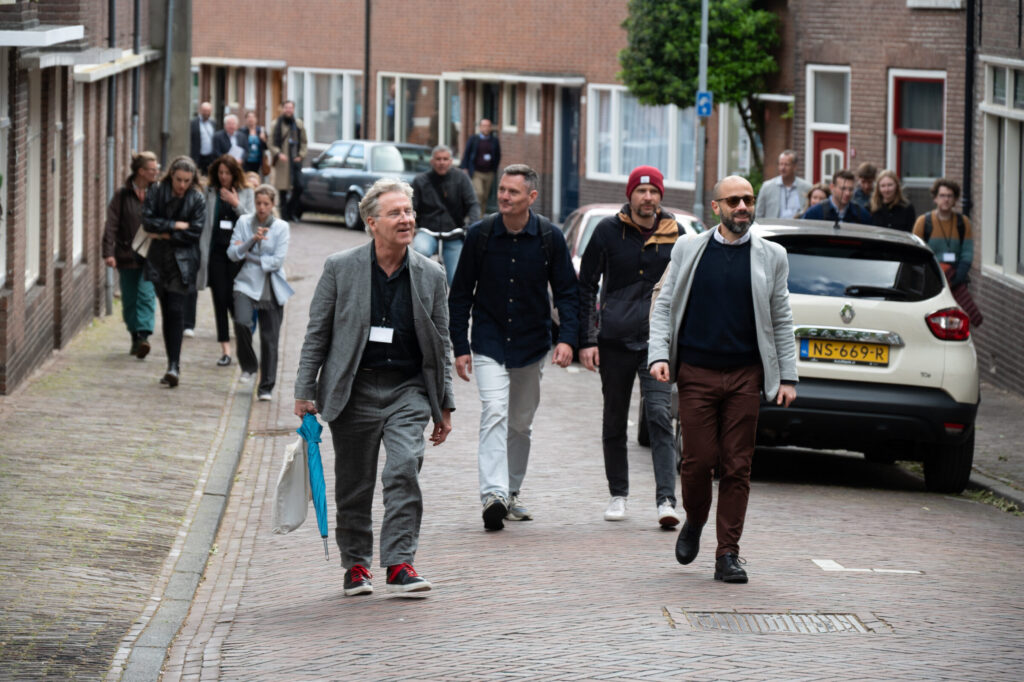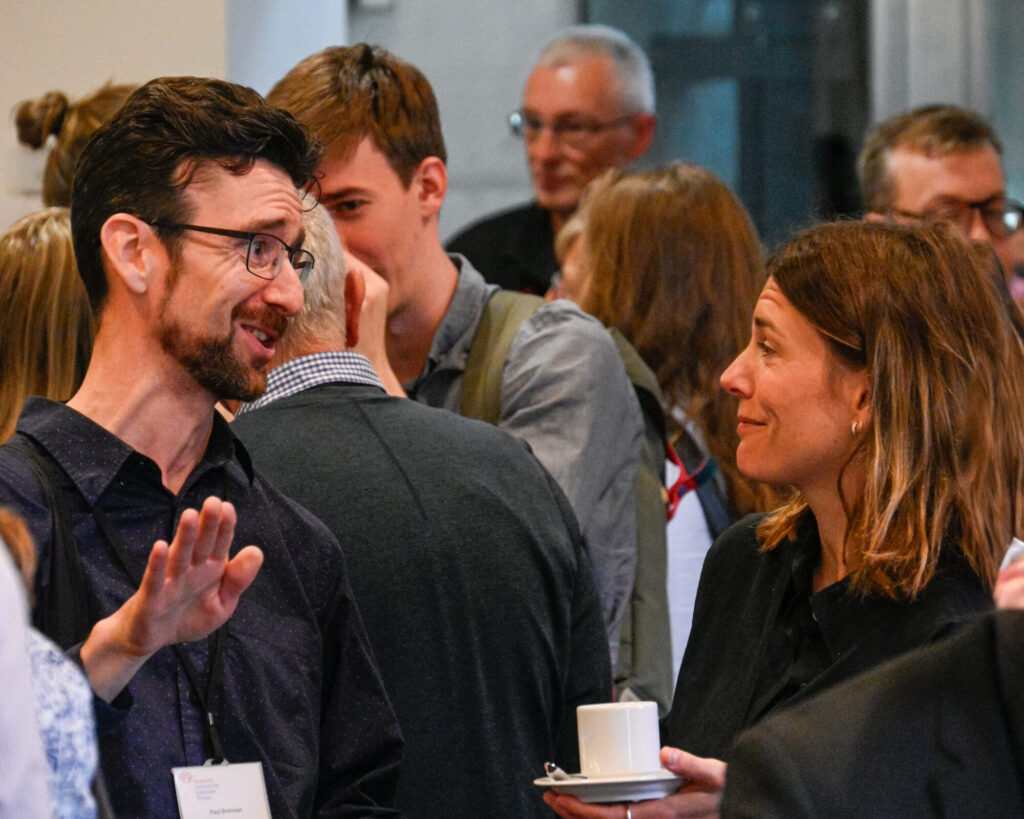
From 21 to 23 May 2025, the RIAS hosted the international conference “A Water’s History of the United States,” a three-day gathering at the Provinciehuis that brought together more than eighty scholars, students, and practitioners to “flip the map” of US history from the solidity of land toward the fluidity of water. Organised by RIAS in cooperation with the Netherlands American Studies Association (NASA) and the Theodore Roosevelt Center at Dickinson State University — and backed by the Leiden-Delft-Erasmus water-heritage consortium, Gale, the Network for Indigenous Studies at Leiden, Europe Direct Zeeland, and the Province of Zeeland — the meeting offered fourteen themed panels, two round-tables, three keynote addresses, and the formal launch of the new Blue History Network.
Day 1 – Wednesday, May 21
On the first day, welcoming friends and colleagues to Middelburg, Dario Fazzi (RIAS) invoked Zeeland’s storied motto – Luctor et emergo, “I struggle and I emerge” – to frame the conference’s central ambition: to wade into the nation’s murky, vital, and often contested waters and to surface with a clearer view of how they have moulded American power, identity, and imagination. Picking up the metaphor, Gaetano Di Tommaso (RIAS) talked about water as a medium of connection as he charted three thematic currents – patterns of governance, modes of production, paths of resilience – that would braid through the next three days. After organisational acknowledgements to the institute’s staff and invaluable student volunteers, the organizers challenged the audience to let their scholarship “dissolve a few intellectual dams” and flow across disciplines.
Completing the welcome, Michael Patrick Cullinane (Theodore Roosevelt Center) and Frank Mehring (Radboud / NASA) underscored the organisers’ hope that this blue-water perspective would link environmental history with legal, literary, and Indigenous studies, offering valuable new insights on both sides of the Atlantic. In the first plenary session, Martin V. Melosi (University of Houston) mapped water’s multifaceted roles – as sustenance, border, commodity, right, energy source, transport corridor, and destructive force – and urged historians to track the cultural hierarchies that govern its allocation. His survey of US waterworks and hydro-infrastructure set the conceptual frame for the sessions that followed.
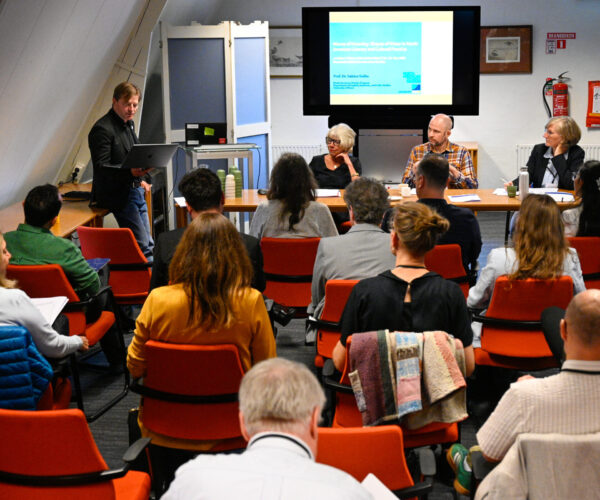
Panels 1 & 2 unfolded in parallel. Under the chair of Marcella Schute, Water and Race juxtaposed Thanayi Jackson’s study of the Black farm colony of Allensworth, California; Sam Hege’s examination of aquifers as racialised capital; and Sara Fingal & Camille Wise’s environmental history of Rainbow Beach “wade-ins” on Chicago’s South Side. Next door, Water Narratives & National Imaginaries, chaired by Frank Mehring, opened with Sabine Sielke’s meditation on “waves of knowing” in US culture, moved to Steffen Wöll’s archipelagic reading of trans-oceanic empire, and closed with Jutta Zimmermann’s exploration of Lidia Yuknavitch’s literary work.
After lunch, Panel 3, Water Colonialism & Dispossession, traced Progressive-Era drainage schemes that weaponised conservation against Indigenous landholders and paired them with a comparative look at the Tennessee and Jordan Valley Authorities and with Laura De Vos’s work on salmon treaties in the Pacific Northwest. Across the foyer, Panel 4, Flowing (of) Waters, Writing (of) Identities, followed rivers in William Faulkner, Great Lakes nation-making in texts by Margaret Fuller and Tekahionwake, and toxic fluidities in Jim-Crow agriculture.
Late-afternoon sessions shifted from empire to resistance. Panel 5, Water, War & Empire Building, surveyed Grant’s Civil-War river strategy, the rise and fall of federal freight services, dredging as an imperial tool, and wartime shipbuilding on Portland’s Kaiser yards; while Panel 6, Water & Practices of Indigenous Resilience—co-sponsored by Leiden’s Network for Indigenous Studies—showcased Hawaiian demilitarisation campaigns, wetlands defence in California’s Sacramento Valley, Ojibwe watershed activism, and eco-theological readings of sacred water currents. A foyer reception capped the day’s conversations
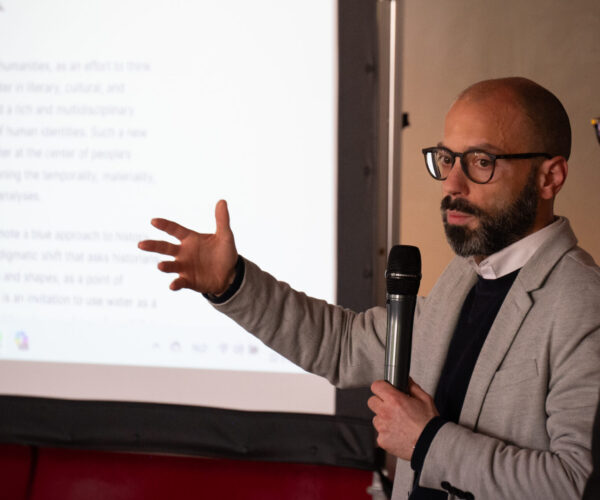
Day 2 – Thursday, May 22
Panels 7 & 8 opened Day 2: Rivers of History traced the St Marys River as a borderland, water-community entanglements on the Colorado Plateau, and “radical impermanence” along southern rivers, while Maritime Spaces, Maritime Narratives moved from New-England sea mythologies to women’s whaling journals and uncanny waters in twentieth-century comics.
Mid-morning coffee gave way to Panels 9 & 10. Urban Waterscapes unearthed lost ditches in the US West, legacies of water histories in New England and Louisiana, and historic ponds-turned-dumps in Rhode Island, whereas Water for People, People for Water debated public-access doctrines, Great Lakes environmental justice, and desert survival politics.
The afternoon split between Panel 11, Water Infrastructure—with case studies on Denver’s invisible inequities, “improvements” on the Great Lakes, and experimental flows at Glen Canyon Dam—and Panel 12, Coastal Science & Coastal Life, which coupled California beach engineering with levee life in bayou country and post-Vietnam fisheries conflict on the Gulf.
The 2025 RIAS Environmental History Lecture followed: Sarah Hamilton (University of Bergen) asked what a “thirsty planet” can learn from the vertical histories of groundwater extraction in Australia, California, and Spain, showing how subsurface resources slip beneath regulatory radar yet bind local users into global markets. The speakers’ dinner that evening also served as the official launch of the Blue History Network, a platform for ongoing collaboration among scholars of watery pasts and presents
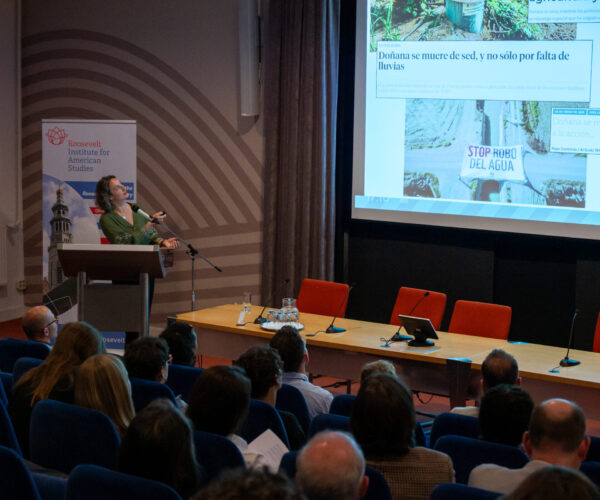
Day 3 – Friday, May 23
On Day 3, Panel 13, Water Techno-Politics at Home & Abroad, floated atmospheric-river engineering, post-war solar desalination schemes, and alternative regimes for deep-sea mining. Panel 14, Water Scarcity & Dystopian Fiction, read twenty-first-century drought novels and the two-part film Dune as allegories of colonial extraction and climate precarity.
A final change in the program brought the participants of the two roundtables together in a single session, set up to distill the gathering’s main takeaways surrounding water’s agency and role in US history, as well as avenues to develop water-related studies and curricula.
In the closing keynote, Sarah S. Elkind (San Diego State University) used case studies from throughout the twentieth century to illustrate how reformers – and resisters – have shifted water policy among local, state, and federal governance levels whenever a tactical advantage was needed to keep the policy battle alive. Her talk revealed why debates over infrastructure still echo with the promise—or the peril—of American federalism today.
Program, acknowledgements, and next steps
The complete program can be downloaded here. The organisers extended warm thanks to the Province of Zeeland and all their sponsors, as well as to every participant whose research helped drive the tide of ideas. Plans are already underway for Blue History Network workshops and peer-reviewed publications that will disseminate these insights.
Please scroll down to explore a selection of photos from the event.

